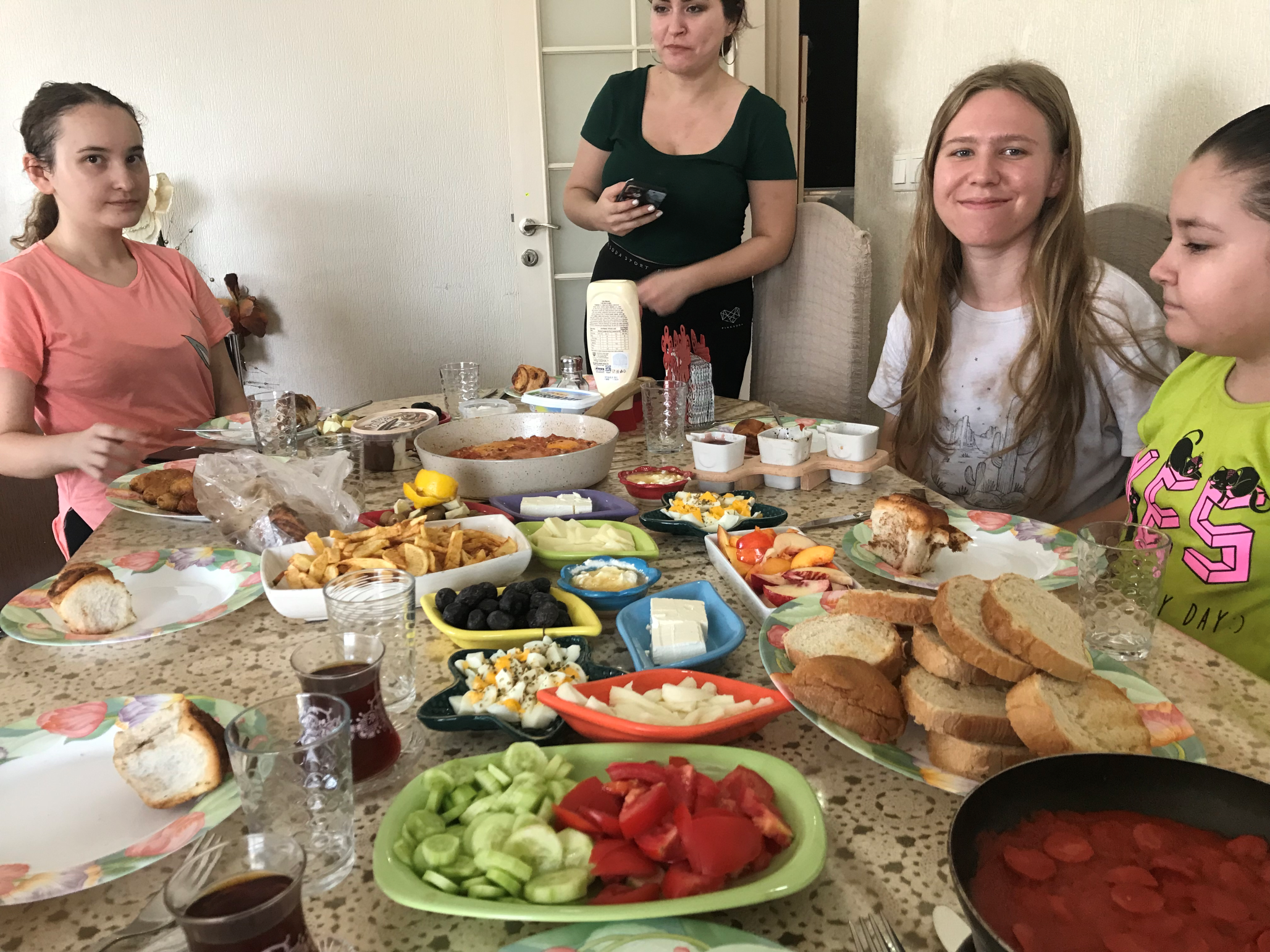NSLI-Y 2023 Turkey – Week 5
A Taste of Türkiye
Turkey is famed for its food, no question, and shared meals are central to Turkish family life. The Turkish kitchen is a rich mixture of cultures and cuisines stretching from the Balkans to Central Asia, and students have had many opportunities to try different dishes, whether at home or out in the city.
On Monday, our local coordinator Nalan brought a special, seasonal treat for everyone to try. Aşure, sometimes called Noah’s pudding in English, is shared between several cultures. In a Muslim context, it is served on the tenth day of the first month of the year, to commemorate both the arrival of Noah’s Ark at Mt. Ararat (or Mount Judi, depending on who you ask) and Moses’s delivery from the hands of the Egyptians. According to some sources, this dish has been served going back all the way to ancient Babylon, where it represented fertility and abundance. It is customary to make a large amount to share with friends and neighbors, so it has come to symbolize friendship and neighborly love. It can also be a symbol of diversity. Take a look at this recipe and you might understand why.
Nothing beats homemade food, and this week, students had an opportunity to try their own hands at making one of Turkey’s most popular dishes: mantı. Turkish mantı (as opposed to other versions found in central Asia) are quite small and might be compared to ravioli or dumplings. Due to the time-consuming nature of preparing and rolling out the dough and filling and forming the mantı, women would traditionally gather together to make the dumplings. They could then freeze or dry large quantities to serve throughout the year. With a group of 14 hungry teenagers, there was no question of saving any of the mantı we prepared! For dessert, students were given a brief tutorial on how to make a semolina based halva, which was then stuffed with ice cream. It was a decadent end to a delicious meal.
We ended the week on a high note: students had the opportunity to see a live performance of traditional Turkish Karagöz shadow theater put on by a master puppeteer. Bursa is considered the hometown of the main characters in the repertoire. According to legend, they were executed by a fourteenth century sultan in the for causing work delays due to their constant antics. The joke was ultimately on the sultan, however, as they became a major source of entertainment and satire during the sixteenth century. The characters are beloved by generations of Turkish audiences, and they may now have some new American fans.

Anna gets ready to have a traditional Turkish breakfast with her host family.

Nalan serves up Aşure.

The group gets ready for their cooking class.

Jack browses the carpet selection with Lauren, Nirek, Thomas, and Will.

Will mixes the dough for the mantı, Aristo peeps over his shoulder.

Sajid learns a new technique while Aristo looks on.

Alhena, Lauren, and Fernanda fill the mantı.

Francesca, Riya, Alhena, Noelle, and Fernanda stand by their work.

Rania and Noelle prepare the dessert (dondurmalı irmik helvası).

Semolina helva filled with ice cream.

Aristo talks about his hometown in front of the class.

Group photo outside the Karagöz Museum.

Thomas and Will explore the Karagöz Museum.

On with the show!
